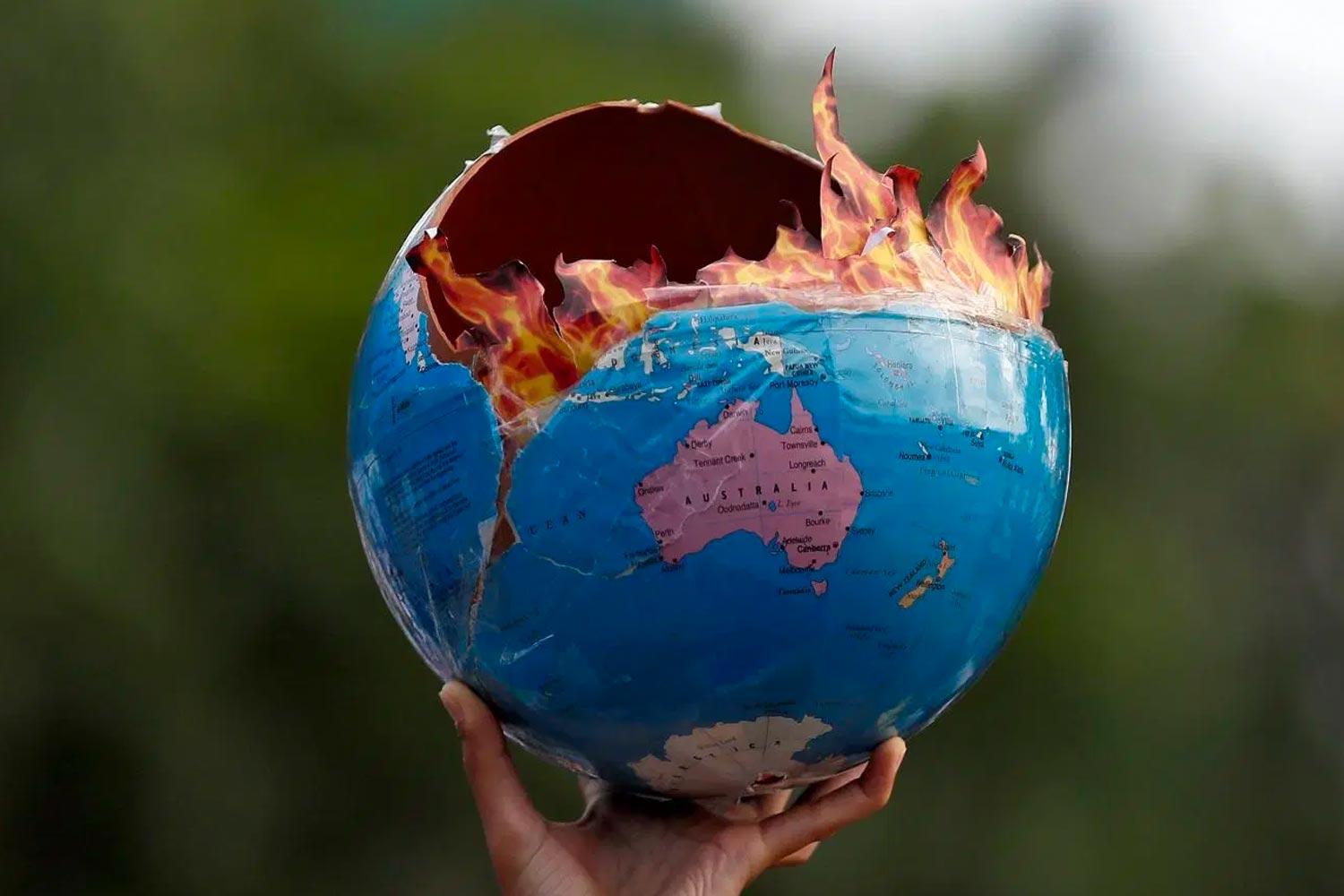One in three people across the globe is experiencing the harsh reality of a lockdown in order to fight COVID-19 from the end of March. The silver lining from this terrific halt is that the air pollution has been slashed as industrial activity is shut down and flights are cancelled and people are at home. The global lockdown has led to a rejuvenation of nature, ecosystems, biodiversity and even urban environments are rediscovering a degree of peace and serenity. It has also led to decrease in greenhouse gas emissions and the significant restrictions on purchases outside of “essential goods and services” have further put a grinding halt to the cult of unnecessary materialistic consumerism. The Coronavirus Pandemic has offered a taste of the air we might breathe in a low-carbon future (If you some of us are able to experience it from our terraces and balconies) In fact, this is the largest ever global air pollution experiment by turning off the major sources of Pollution: Industry and Transport.
To put it in numbers, World Health Organisation (WHO) estimates that about 3 million people die each year from ailments caused by air pollution, and that more than 80% of people living in urban areas are exposed to air quality levels that exceed safe limits. The situation is worse in low-income countries, where 98% of cities fail to meet WHO air quality standards. Measurements from the European Space Agency’s Sentinel-5P satellite show that levels of nitrogen dioxide (NO₂) over cities and industrial areas in Asia and Europe were reduced by 40% from 2019, thanks to the lockdown.
It could become an unprecedented natural experiment in noise pollution too. Some of the world’s most vocal animals like birds and whales are already be benefiting from a quieter environment.The swift rise of anthropogenic noise over the past century has made this harder for birds. Cities like New York, Bangkok, Tokyo, Delhi, Sao Paulo, Bogota have been experiencing an impossible reduction in pollution levels- air, water and noise. The stories of animals in human habitations, moving freely on the streets as we continue to stay home are also appearing. Some may be crafted for social media, most of the cases are real.
India – World’s largest lockdown
World’s largest lockdown of a country of 1.3 billion people to a near halt has also provided a temporary remedy to another pressing health issue: suffocating pollution levels as all factories, markets, shops, and places of worship are now closed, most public transport suspended and construction work halted as Indians practice social distancing through Lockdown 1.0 and ongoing Lockdown 2.0 till 3 May 2020.
Some Incredible Experiences from Nature in India during Lockdown
Already, data shows that the main cities are recording much lower levels of harmful microscopic particulate matter known as PM 2.5, and of nitrogen dioxide, which is released by vehicles and power plants. The sudden fall in pollutants and the subsequent blue skies and starry nights signal a dramatic shift for India — which has 21 of the world’s 30 most polluted cities, according to the IQAir AirVisual’s 2019 World Air Quality Report. The typical Delhi AQI hovers around 30 and one afternoon, after a spurt of rain, it dropped to an unbelievable 7. The residents of Jalandhar in Punjab woke up to an incredible sight in the distance: the Dhauladhar mountain range in Himachal Pradesh. The peaks, which are over 120 miles away, had not been sighted on the Punjab horizon for almost 30 years. The health of the Ganga River has seen significant improvement since enforcement of the nationwide lockdown that has led to a reduction in the dumping of industrial waste into it. The organic pollution level still gets diluted in the river but it is the chemical pollution by industries that destroys river’s self cleansing properties. The self-cleansing properties have improved due to which the water quality has improved in this lockdown phase.
Moment for Mobilisation against Climate Crisis
The spread of the virus has triggered an unprecedented worldwide response composed of rigorous social distancing as well as ambitious economic dole packages and, for a while, has eclipsed all other crises, including the climate Change. This is a moment for the mobilisation against the climate crisis. Healing of Nature now is very short lived and a rebound may offset the respite with the resource hungry population trying to be making up the losses. But if the world waits for climate change to trigger an impact similar to Covid-19, it will be too late. Given the threat of climate change on human society and the economy, action against climate change should already be underway. Climate change will increasingly have dramatic effects on poverty, inequality as well as human and ecosystem wellbeing. The impacts will furthermore affect disadvantaged and vulnerable populations through food insecurity, higher food prices, income losses, lost livelihood opportunities, adverse health impacts and population displacements.
Lessons to be leant from Covid- 19 policy Response
According to Friedman, “The most powerful force on the planet is Mother Nature and the second most powerful force is Father Greed, i.e., the markets. Mother Nature’s Covid-19 disease — one of many Darwinian engines she employs to mercilessly sort out the weak from the fit. Mother Nature is just chemistry, biology and physics. You cannot sweet-talk her. You cannot spin her. You cannot manipulate her. And you certainly cannot tell her, “Mother Nature, stop ruining my beautiful stock market.” Three lessons that are to be learnt from his analysis are:-
Climate change doesn’t “peak” — and then flatten out and then maybe dissipate or be permanently prevented by vaccine — so normal life resumes. Humans will have to contend with the implications of sea level rise, mass movements of populations and various kinds of extreme weather — wetter wets, hotter hots and drier dries — forever. There is no herd immunity to climate change. There are only endless impacts on the herd. Manage the unavoidable so that you can avoid the unmanageable.
A second principle that climate change and pandemics share is: If we don’t take care of the conditions that enable us to prosper, we will not prosper in the end. China was reckless about importing and mixing “terrestrial wildlife” — supposedly endowed with magical sexual and other powers — with regular meat and seafood in its wet markets. It appears to have spawned both SARS and the new coronavirus. This has to stop. If that happens, our society will need endless bailouts to move cities and recover from weather extremes.
Finally, epidemiologists will tell you that climate change may well be the next great engine for the next pandemic. We should use tax incentives to make it incredibly beneficial for every utility to decarbonize their power generation and shift to wind, solar and other renewables.
The Covid-19 policy response has illustrated the potential of a worldwide reaction, fast learning processes, trial-and-error policymaking and progressive tailoring of the mix of measures. With all its imperfections, the global policy response to the Covid-19 pandemic has delivered more results in two months than decades of climate change negotiations. Fighting climate change requires a collaborative approach between all spheres of society unlike the former. If it is to redress the inequalities linked to climate change, its response must also see significant support from high-income countries towards the rest of the world. It must also heavily redirect resources towards local, sustainable activities, including education, health, sustainable agriculture, renewable energy and the circular management of resources. A just transition to a sustainable model of development would be beneficial from a socio-economic perspective. It would create a large amount of local employment, reduce exposure to volatile, expensive and largely imported fossil fuels, bring innovation and generate vast savings from improvements in human and ecosystem health. In addition, the solutions to decarbonise are largely available and, in most cases, cost-effective. It will be difficult. But there is hope. The Covid-19 crisis is proof. A global response is possible. But, in the case of climate change, a global, coordinated response, larger than the sum of its parts, is required.



Get Social